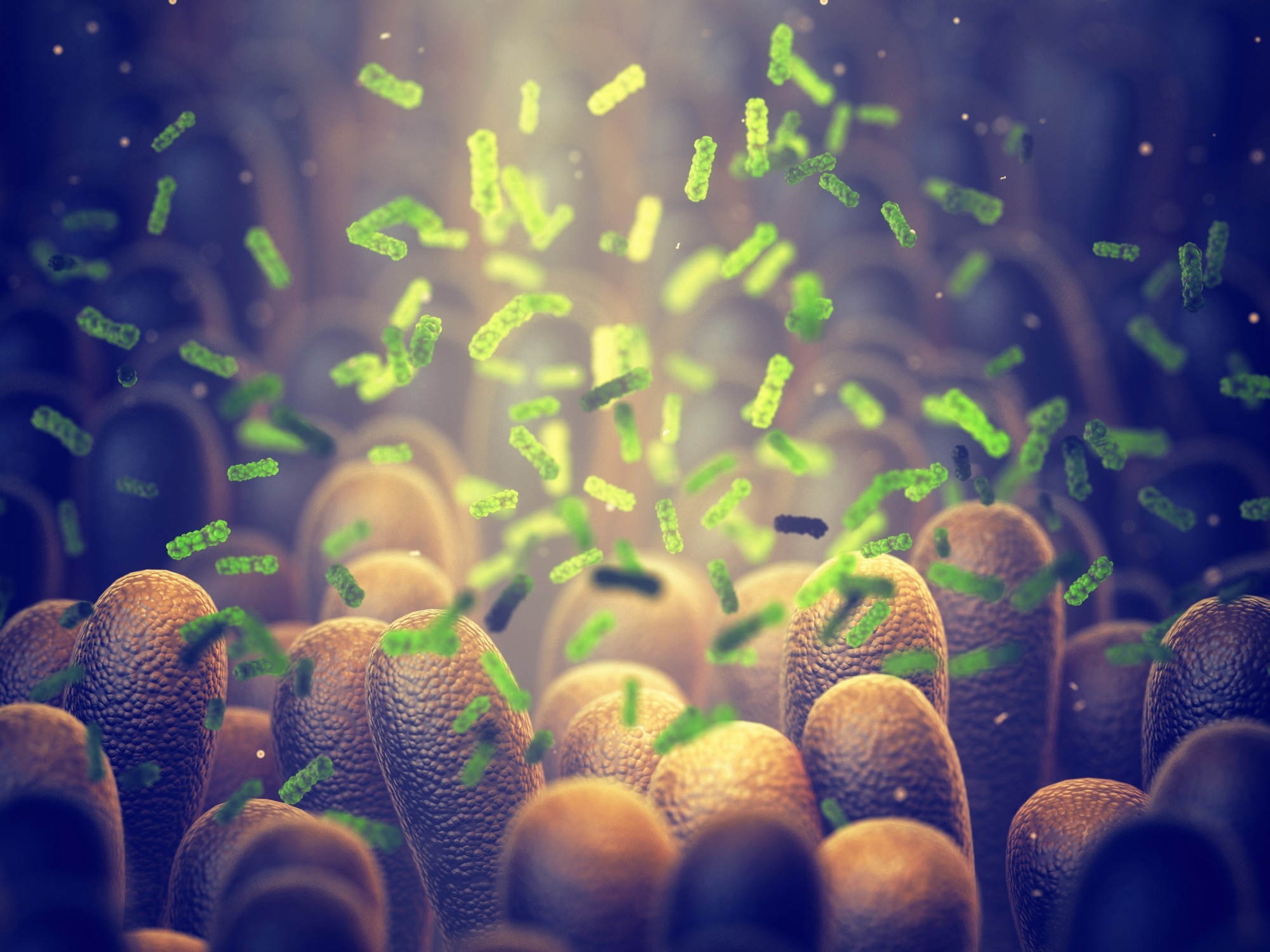In a recent study published in the journal Scientific Reports, researchers report that the food preservative nisin remains intact while traveling through the gastrointestinal (GI) tract. Here, nisin alters the functioning and composition of the gut microbiome by modifying the relative abundances of Firmicutes and Proteobacteria.
 Study: Modulation of the gut microbiome with nisin. Image Credit: nobeastsofierce / Shutterstock.com
Study: Modulation of the gut microbiome with nisin. Image Credit: nobeastsofierce / Shutterstock.com
What is nisin?
Some bacterial species produce antimicrobial peptides known as bacteriocins that have been used in the food industry as preservatives. For example, nisin, which is produced by Lactococcus lactis, has broad-spectrum bactericidal activity and has been used as a food preservative throughout the world.
Nisin is effective in controlling Gram-positive bacteria such as Clostridioides difficile. In combination with other compounds like ethylene diamine tetra-acetic acid and cinnamaldehyde, nisin has been effective in controlling enterotoxigenic Gram-negative bacteria such as Escherichia coli.
Previous studies have used chicken and mouse models to demonstrate the in vivo efficacy of nisin on the microbiome, whereas nisin efficacy has been proven in ex vivo experiments on the human microbiome. To date, no studies have assessed the in vivo effects of nisin in large mammals.
About the study
In the present study, researchers used porcine models to elucidate the impact of orally ingested nisin on the gut microbiome using a metagenomics approach, along with 16S ribonucleic acid (RNA) sequencing and matrix-assisted laser desorption ionization-time-of-flight mass spectrometry (MALDI-TOF MS). The transit of nisin encapsulated in an ethyl cellulose preparation, which protects the protein from degradation in the GI tract, through the small intestine, and its impact on the gut microbiome was compared with that of non-encapsulated nisin.
Piglets were fed encapsulated and non-encapsulated nisin through direct addition in the pig feed. A control group was also included in the study, in which the pig feed contained the ethyl cellulose material used to encapsulate nisin.
Activity assays and MALDI-TOF MS was used to confirm the antibacterial activity and intact nisin levels present in fecal samples from each piglet. Fecal samples were also analyzed for short-chain fatty acid (SCFA) concentrations to determine gut microbiome activity levels.
The six SCFAs evaluated in this study included acetate, butyrate, isobutyric acid, isovaleric acid, propionic acid, and valeric acid. These measurements were taken at baseline, four days following treatment, and 10 days after the last treatment.
Shotgun metagenome sequencing and 16S rRNA profiling were used to assess gut microbiome composition at various time points during and after the treatment. Shannon index was calculated to estimate the alpha diversity of the piglet gut microbiomes in the three groups at baseline and various time points after treatment. Unifrac and Bray-Curtis distances were also calculated to determine beta diversity.
Differential Ranking was used to estimate the relative abundance of species after nisin treatment. Shotgun metagenomics was also used to assess the functional profile of the gut microbial communities across the three groups.
Intact nisin causes reversible changes to gut microbiome
At concentrations well below the safe consumption levels, intact nisin traveled through the GI tract and modified the gut microbiome in the lower intestine, thereby affecting the relative abundance of Gram-positive bacteria.
However, these changes were reversible, with the gut microbiome composition returning to normal three days after nisin treatment had stopped. Furthermore, the gut microbiome diversity had not changed significantly.
Nisin treatment decreased the abundance of Lactobacillus and other Gram-positive bacteria and increased the relative abundance of Gram-negative E. coli. Furthermore, in the groups where the piglets were fed encapsulated nisin or the ethyl cellulose material, the abundance of Catenibacterium increased, thus indicating that Catenibacterium bacteria were potentially using the cellulose encapsulant as an energy source.
The changes in the relative abundance of Gram-positive and Gram-negative bacteria were also reflected in butyrate, acetate, and propionate levels. To this end, nisin treatment reduced acetate and butyrate synthesis pathways and increased the synthesis of propionate.
Conclusions
Nisin was not degraded by proteolytic enzymes in the upper GI tract, traveled intact to the lower intestine, and modified the composition of the gut microbiome.
Nisin treatment also increased the relative abundance of Gram-negative bacteria such as E. coli and reduced the abundance of Lactobacillus and other Gram-positive bacteria. Importantly, the changes induced by nisin on the gut microbiome were reversible, and the gut microbiome composition was restored to previous conditions after nisin treatment ceased.
Journal reference:
- O’Reilly, C., Grimaud, G. M., Coakley, M., et al. (2023). Modulation of the gut microbiome with nisin. Scientific Reports 13(1). doi:10.1038/s4159802334586x

